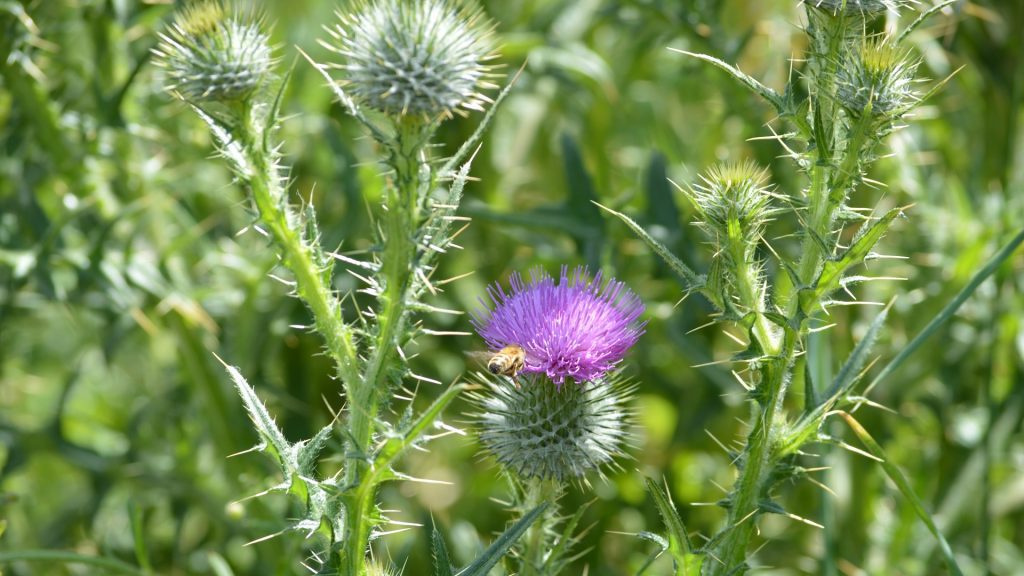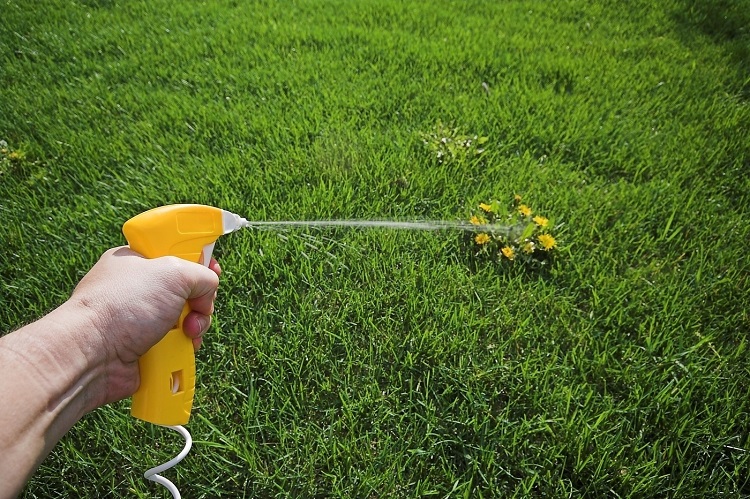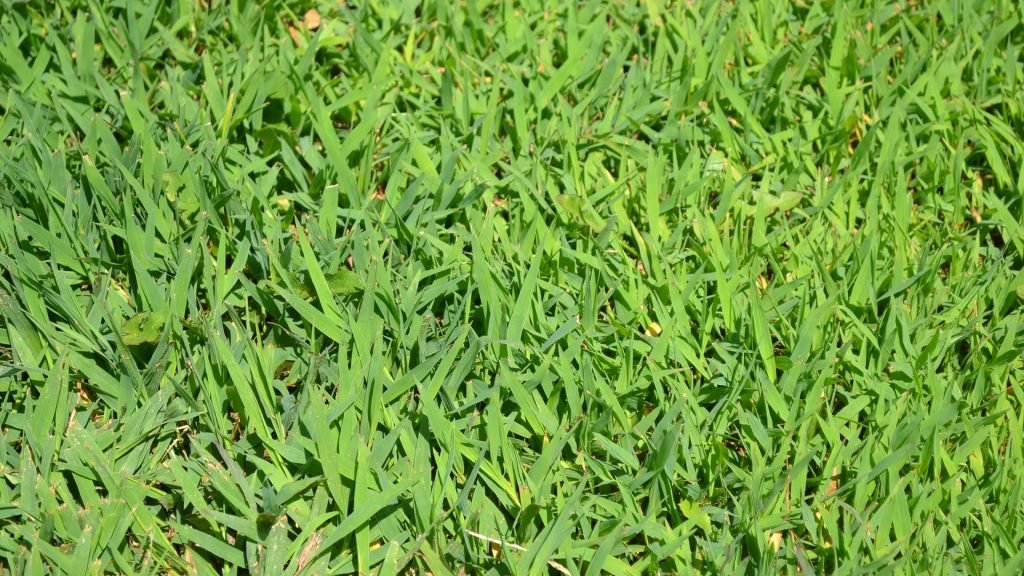
The Surefire Way to Get Rid of Thistles in Your Lawn
When it comes to annoying weeds, thistles would be up there with some of the worst. Most gardeners have had to deal with a thistle invasion at some time or another, so having some tricks up your sleeve to get rid of them for good is ideal.
How do you get rid of lawn thistle? The three most common approaches for killing thistles are manual weeding, applying a harsh chemical herbicide, or using a natural alternative like vinegar or boiling water. Depending on your gardening style, you might find one or more of these to be effective at eradicating the weed.
If you’ve been wondering how to get rid of thistles in lawn and grassy areas, we can help. This guide will teach you what the weeds are, a few handy methods for removing them, and what to do when they grow out of your control.
What Are Thistles?

Thistle is one of the most common lawn weeds found in the United States and one of the most invasive.
With a noxious weed classification, the plant is regulated by the government and has been proven to be harmful to surrounding plant life and wildlife, which is why you want to tackle it as soon as you see it.
As a member of the daisy family, it’s easy to mistake the thistle and its pretty purple flowers as nothing too serious.
The usual thistle species you see growing on your lawn is likely Canadian or creeping thistle, and although it looks small, it can produce between 1,500 and 5,000 seeds within its lifetime.
Once these seeds start growing, they spread out strong roots that can grow up to 20 feet in length and go deep into the ground.
If you’ve spotted some thistle growing on your lawn, there’s a good chance it goes further and deeper than you realize.
Are They Dangerous in the Garden?

As well as being toxic to animals, people, and other plants, thistle is a major pain to get rid of.
Even savvy gardeners struggle sometimes to get a thistle invasion out of control and find they have to call in expert help just to remove them.
What makes thistle such a force to be reckoned with is the ease with which it spreads, and even removing their flowers requires care to not spread the seeds any further.
Although it’s easier to remove them in the seedling and small plant stage, you can still get rid of thistles when they’re fully grown, if you know what you’re doing.
How to Get Rid of Thistle

Although stubborn, the thistle isn’t some mystical plant that simply can’t be destroyed. There are a few tactics you can try to get your thistle problem under wraps if you find the noxious weed is taking over your lawn.
- Manual weeding: If you like to pull weeds by hand, there’s an art to removing thistle you need to know about. Snip the plant at the soil level and avoid mowing it, and when you’re ready, dig out the roots with a sharp weeding tool. Be prepared to hunt for the roots as they can travel exceptionally far in this plant.
- Harsh herbicides: Some people like to come out guns blazing when dealing with thistles, and certain selective herbicides are ideal. Be mindful when applying these that they’re toxic chemicals and aren’t safe around pets and children.
- Natural herbicides: Those who prefer a natural approach might find creating their own herbicide to be effective. Household products like dish soap and vinegar are great at treating weeds and thistles hate the acetic acid content of this formula. Apply once a week regularly until you start seeing a difference.
- Call the experts: There’s nothing wrong with admitting defeat when it comes to weed, and especially one as stubborn as thistle. If you’ve tried all of the other methods and find that you still can’t get this weed under control, calling a landscaping professional who has experience with the plant is your next best option.
Say Goodbye to Thistle Forever
Thistle is the bane of many gardeners’ existence and they have the power to quickly and easily take over a carefully manicured lawn.
With our advice and an understanding of when you might need to call for help, you can hopefully get rid of this pesky weed for good.
Related Questions
There are some weeds more prevalent than others on the lawns of America, and knowing which ones are the biggest threat is important.
We’ve answered a few commonly asked questions about lawn weeds that will make it easier to identify them and help your grass to be free.
What is Ground Ivy?
Ground ivy, also known as Glechoma hederacea and creeping Charlie, is a perennial weed that belongs to the mint family.
As one of the most invasive weeds in North America, it’s not toxic in small amounts, but can spread quickly through your garden, so harsher herbicides are best for treating it.
What is Yellow Nutsedge?

Nutsedge is a perennial weed that comes in different colors, with yellow nutsedge being the most common in the USA.
Classed as a noxious weed, it’s important to treat and remove this plant immediately if you see it growing in your garden, otherwise, it can do serious damage to surrounding wildlife and plant life.
Are There Weeds That Look Like Flowers?
There are many varieties of weeds that produce a flower, which can make it hard to determine which ones should be treated or pulled.
The most common flowering weeds are violets, daisies, and white clovers, but it’s important to note that not every variety of these would be classified as a weed.
Resources:

